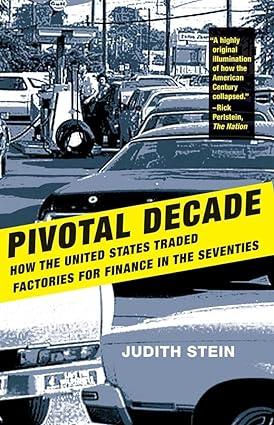Question
Using the assumptions and the ROI percentage generated from your Excel calculations, please answer the questions related to each assumption below. Be as specific and
Using the assumptions and the ROI percentage generated from your Excel calculations, please answer the questions related to each assumption below. Be as specific and detailed as possible, and answer EACH QUESTION ASKED BELOW EACH ASSUMPTION thoroughly. If you have any questions, please let me know.
Assumption 1: Marketing Budget
You have been allotted a maximum of $165,000 for marketing expenses, not including staff and must decide which marketing channels will receive money from the $165,000 marketing budget.
Select at a minimum 2 areas where you will spend the majority of your marketing budget.
Provide detail as to your logic and reasoning behind why you selected these areas, the amounts you allotted to each, and why you think this strategy will be the most successful.
Reflect those figures in the "Marketing Expenses (excluding offer costs)" area of the spreadsheet.
Assumption 2: Staff Expense Budget
There are three employees that will be working on this campaign, one with an annual salary of $112,500, the second with an annual salary of $72,830, and the third with an annual salary of $36,400. Assume it will take approximately 6.25 days to complete the campaign. Use the marketing staff expense worksheet to calculate the daily rate of each employee.
Please explain why you (hypothetically) need three employees at three different rates.
Further, explain why you might have selected the duration of 6.25 days.
Assumption 3: Offers/Incentives/Temporary Discounts
While you do not need to reflect this in your spreadsheet because we assume there are no other offers/incentives/temporary discounts applicable to this marketing campaign:
Why might a company promote special offers, incentives, and temporary discounts to drive traffic?
What would be a reason they would not?
If a company offers incentives or discounts, does that increase or decrease ROI and why?
Assumption 4: Other Expenses Outside Marketing Budget
While for this assignment we assume there are no other expenses outside of the marketing budget that are applicable to this marketing campaign, what could these other expenses look like in real life?
Provide three examples and explain what can happen to marketing ROI and why.
In what instances could this increase ROI and in what instances could it potentially decrease ROI?
What mistakes do you think marketers make by focusing on the wrong things, or alternatively, thinking outside the box?
Assumption 5: Marketing Impact
Assume you want this marketing campaign to reach a target of 27,000 people (meaning the number of people you want to drive to your website to buy "Le Grill").
What key pieces of information would help you arrive at deciding 27,000 people is important to this campaign? Please be as specific as possible in describing your logic and steps you would have taken to arrive at this hypothetical figure.
Assumption 6: Net Conversion Rate of Incremental Sales
Assume that of the 27,000 people who go to the website, you will have a conversion rate of 2.2%.
Hypothetically, why would you set a goal for a 2.2% conversion rate?
Is that a good conversion rate for a marketing campaign? Why or why not?
What does the ROI percentage tell us about the joint influence of marketing impact and net conversion rates?
How do we estimate and calculate conversion rates to help us plan our marketing campaigns?
Assumptions 7 & 8: Average Revenue per Sale or Customer (NPV)/ Gross Margin
Assume your NPV of each "Le Grill" Sale will net you $875 and a gross margin of 38%.
What do net sales and gross margin have to do with return on marketing investment?
If either margins or incremental sales were lower than 38% and $875 respectively, what would happen to the ROI?
How does this information help you make decisions in allocating your marketing budget?
Assumption 9: Reduction to Gross Margin from New Sales
Assume that 30% of the profit from incremental sales is refunded to customers who filed complaints within the money-back guarantee period.
Why do things like product quality and money-back guarantees ultimately influence the return on marketing investment?
In what ways do you think the various divisions of a company can work together to ensure marketing dollars are well spent?
What does collaboration have to do with marketing, especially where shared data is concerned?
Assumption 10: Product Quality Improvement and A/B Testing
You assume that if the product quality of Le Grill had been better, this marketing campaign would have been successful. Previously, you had not run an A/B test, and because you know product quality has been improved, you run an A/B test using your current website as the control. You relaunch a marketing campaign after product improvements are made. You find that your conversion rate increases to 3.8% and refunds drop to 7%.
What is conversion optimization?
How do we calculate how long a test should run?
What information does the p-value give us?
Why is it better to test ahead of time rather than after the fact?
How does conversion optimization and testing help us improve ROI?
What methods of analysis can we use to improve ROI?
What is the ROI of your marketing campaign now that the conversion rate has increased from 2.2% to 3.8% and refunds have dropped 23%?
Explain the difference between the two ROI percentages and why marketers would want to use this information across organizational divisions to increase shared data within a company to present the success of a planned marketing campaign.
Step by Step Solution
There are 3 Steps involved in it
Step: 1

Get Instant Access to Expert-Tailored Solutions
See step-by-step solutions with expert insights and AI powered tools for academic success
Step: 2

Step: 3

Ace Your Homework with AI
Get the answers you need in no time with our AI-driven, step-by-step assistance
Get Started


